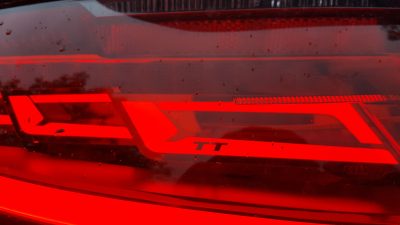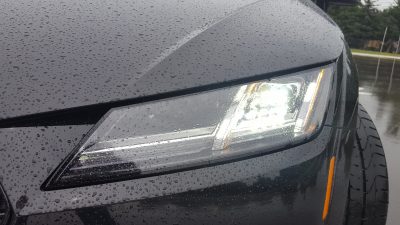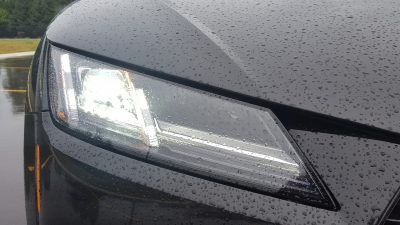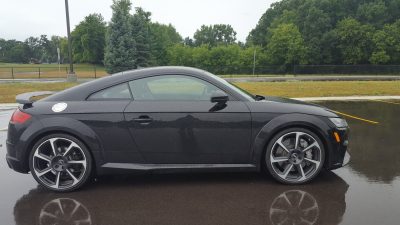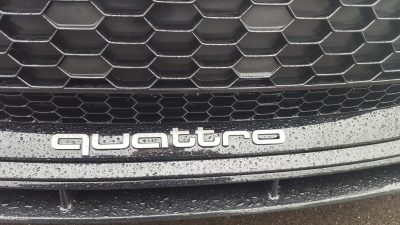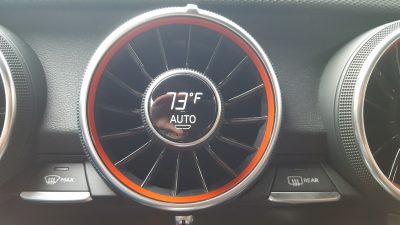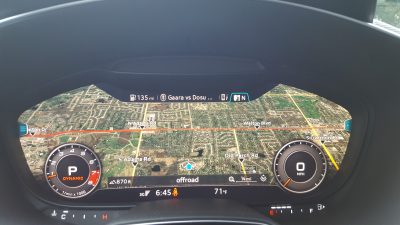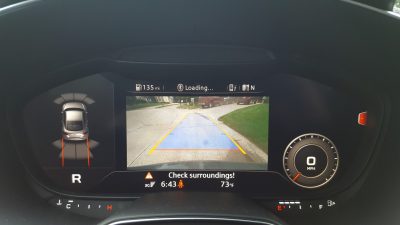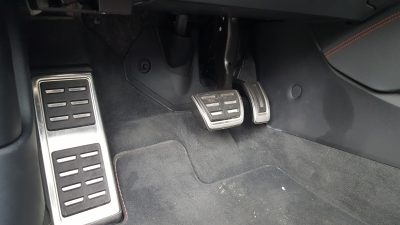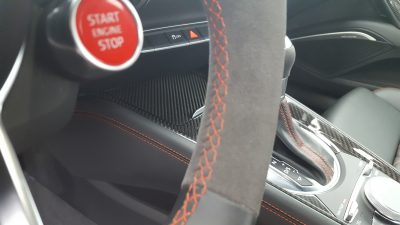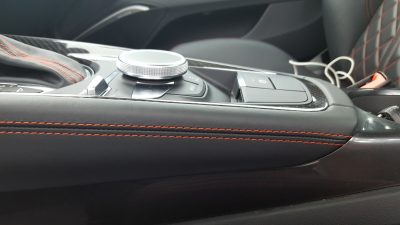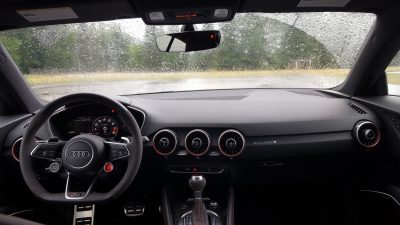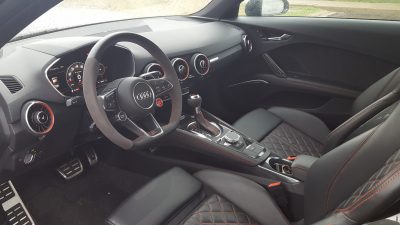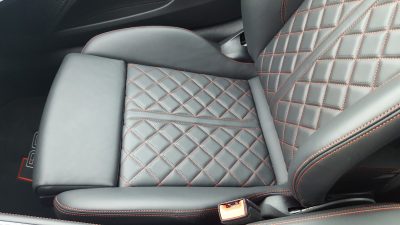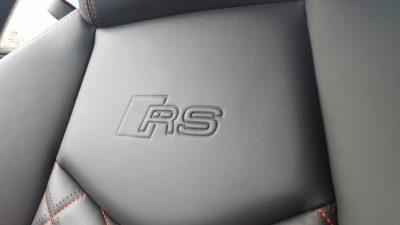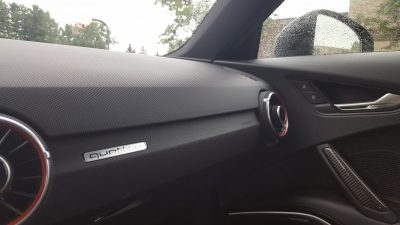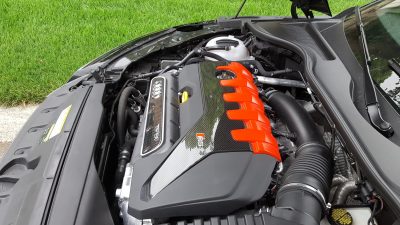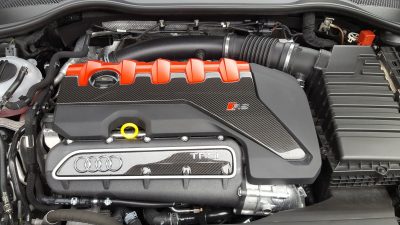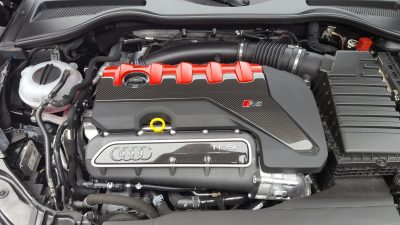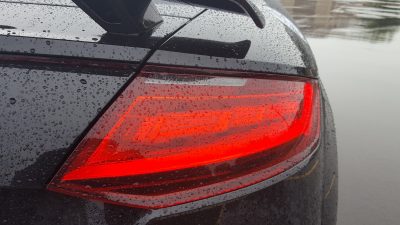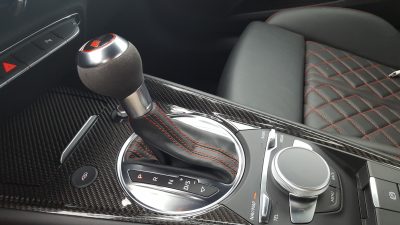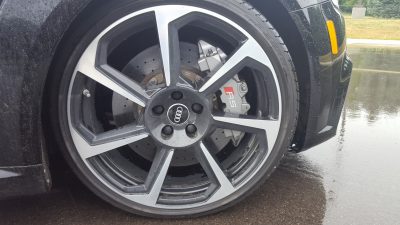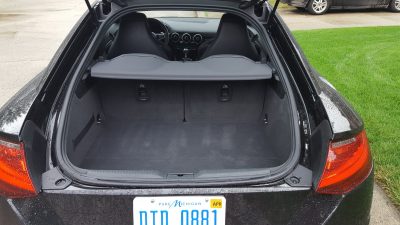It’s not too often that we get the rare and unique opportunity to experience an RS badged Audi.
Serving as the penultimate performance model for the bulk of the Audi lineup (R8 excluded,) these special models aim to bring even higher levels of performance, sophistication, and technology to the lucky clientele that are able to add one of these models to their dream garage.
One of these offerings is the 2018 Audi TT-RS which brings the RS formula to the brand’s venerable two seat sports coupe. But can this latest chapter of TT-RS finally bring the cohesion and full spectrum performance that has eluded the TT for years?
Or is it still an incomplete package searching for the magical glue to allow it to become a true threat in the performance coupe segment.
Aggression and Sophisticated Charms:
When viewed from multiple angles, it’s obvious that the TT-RS has finally entered the phase in its development where full on aggression has become the dominant motif in its exterior canvas. Unlike the previous generation RS, Audi designers eradicated any traces of “cuteness” and clutter from its flanks, and the end result is a TT that does a great job embodying its performance intentions. While the basic DNA that defines lesser TTs is still firmly present, the RS is clearly a TT that has ventured into the dark side of life.
A bigger front grille, and bolder lower air intakes mesh seamlessly with the sleek headlights to produce a much more serious mug that stands out a lot better when viewed by passersby, and makes the TT-RS a much more imposing opponent when viewed in a mirror. The snug profile transitions nicely into a clean design, with our car’s Mythos Black hued paint, and beefy alloy wheels adding even more sinister appeal to its purpose built lines. A tidy spoiler rounds out the package, and it serves as the proverbial cherry on top when it comes to the exterior presentation.
While our tester does not quite possess the unique appeal and the distinctively sporty DNA that defines its corporate sibling the Porsche 718 Cayman, the TT-RS still possesses a unique appeal, and ultimately emerges as the more sophisticated option. This is especially apparent when viewed against its compromised ancestor, which lacked the aesthetic cohesion to truly be successful in its sporting aspirations.
An Interior Filled With Sport and Compromises:
Like the exterior, the interior is clearly focused on providing the best of both worlds for the driver and one lucky occupant (the rest of your friends get to stay home.) Slip into the diamond quilted leather sport seats, and you are greeted by a cabin that oozes luxury and sophistication.
Splashes of carbon fiber and Alcantara lend a sporty air, while high quality leather is placed in all the right places. The TT-RS builds on the simplicity that defines its lesser cousins, and will certainly be noticed more for what has been omitted versus being a tech packed yacht. Audi designers went for simplicity, while also adding the touches of modernity that Audi customers demand.
Unlike the majority of other cars on the market, Audi engineers did not cram an infotainment screen into the center stack, and instead moved all navigation and audio functions into the 12.3 inch digital instrument cluster. Meanwhile, the climate controls themselves have been moved to the center of the vents, and is certainly a unique setup for adjusting the temperature. The end result is a stack that is sparse, but also looks handsome doing it. Our favorite feature has to be the flat bottomed steering wheel which is lifted directly from the R8, and incorporates a racing style spoke mounted engine stop/start button.
The fore-mentioned 12.3 inch digital instrument panel (part of Audi’s Virtual Cockpit system) looks great and the display crisply brings full color information to the driver’s eyeline. However, while some aspects of the system are remarkably intuitive, cramming control of all of these functions into the steering wheel buttons and the voice command system does occasionally drag drivers to an island full of headaches and frustration. A notable offender emerges when inputting addresses into the navigation system.
We discovered that this particular function was far clunkier than it should be, and there are far too many steps for the steering wheel controls to handle.
Thankfully, using the voice command function does help cleave a significant chunk of the frustration out of the experience, and brings more usability to the system as a whole.
The rear seats of our tester are about as useless as they appear at first glance, with considerable gymnastics required to enter and exit this tight space. If your unfortunate enough to find a way to somehow fit back there, you are greeted by non existent headroom, and knee busting legroom.
Leave this space for children, cargo, or spare Guantanamo Bay inmates that need extra encouragement to spill the beans. However, fitting these diminutive seats into such a small space also causes front legroom to be slightly cramped when compared with competitors like the Cayman and the F-Type coupe. But that’s a minor annoyance considering that the front seats do a good job keeping drivers firmly in place during spirited driving, and were reasonably comfortable too.
Compromise however rears its ugly head yet again when you look at the items missing in the RS’s options sheet. A power adjustable steering wheel is not present, along with ventilated front seats and memory settings for the driver and passenger seats. While it is common for some sports cars to include them as part of various optional packages, not having them entirely is very unusual in a car that quickly surpasses $65,000.
Visibility is never a defining characteristic of many sports car entries, but the TT-RS certainly surprised us thanks to its narrow roof pillars, as well as its ample rear glass, though the spoiler does chop into visibility slightly. It’s better than the F-Type though, and it even outshines its Porsche counterpart in every day driving, with passing maneuvers being easy and confident.
World Class Performance and A Nice Pair of Dancing Shoes:
The defining aspect of the TT-RS however is not how well it coddles its passengers, but rather how good it is at delivering ample amounts of driving fun, and on that front our tester managed to truly shine in its element. Power for the TT-RS comes from a turbocharged inline five cylinder engine which brings 400 horsepower and 400 lb-ft of torque to the festivities. This engine also sees duty in the RS3 sedan, and is an eager firecracker of a powerplant that is willing to rip its way to 60 mph in a lighting quick 3.4 seconds.
Unlike other tweaked engines we experienced, the five cylinder has a very broad powerband, and there is still plenty of muscle available even at freeway speeds. At times, a quick stab of the accelerator pedal produces thrill ride-esque acceleration that certainly throws drivers in the back of their seat. This is especially apparent when one uses launch control which shaves a few seconds off its 0 to 60 time, but should only be used in a safe environment. Lastly, the engine is also very photogenic thanks to its stylish carbon fiber engine cover, which is actually part of the $6,000 Dynamic Plus package (more on that later.)
A seven-speed dual clutch automatic replaces the old six speed manual, and delivers quick upshifts, with the gearbox being willing to accommodate equally precise downshifts for more passing power. While the loss of the manual will surely offend some purists, this transmission still makes a very compelling case for itself, and should still please buyers that want the best out of their sports car purchase. When viewed against rivals, the transmission does give up a gear to the eight speed in the F-Type, but it is much more aggressive than the Jag, and it boasts better downshift behavior to boot. Only the Porsche offers even sportier moves, but it is impressive to see the TT-RS hold its own against some very game competition.
Handling behavior is very precise, with our tester boasting impressive cornering stability, and sharp feedback from its electrically powered steering rack. A quick trip to Romeo, Michigan allowed the TT-RS to experience some windy roads while it navigated its way through this small slice of apple country.
The chassis is very communicative, and the RS does a good job delivering crucial feedback to the driver, even when the car is being pushed hard. Rainy weather forced our tester to take a more delicate approach to the curvier sections of our orchard infused route, but the all-wheel drive system did a good job keeping power planted to the road with minimal wheel slip observed.
As mentioned, our tester arrived with the optional Dynamic Plus package. Whereas the standard RS features electronically controlled dampers, this package replaces them with stiffer conventional shocks that incorporate a thicker rear anti roll bar, as well as higher rate springs for even more handling prowess.
While this package does add a bit more precision to the RS’s list of tricks, you pay for it by having to endure a punishing ride on rougher sections of pavement. Unless you plan on taking the RS to weekend track days, or live in a locale that does not feature copious amounts of potholes, we suggest sticking with the adaptive dampers for more usability and overall comfort, especially on long trips. A pity since the carbon ceramic front brakes that also accompany this package did an excellent job delivering razor sharp stops that were smooth and stable.
Value Quotient:
Pricing for the 2018 Audi TT-RS starts at $64,900 which puts it in the ring with V8 powered rivals like the Chevrolet Corvette Gran Sport, as well as the Jaguar F-Type, BMW M2, and the Nissan NISMO 370Z. Our heavily optioned tester ended up with a final sticker of $80,200. This puts it in very elite company, and it also sheds a spotlight on some of the equipment the TT-RS lacks. For instance, the F-Type has power adjustments for its tiller, and seat memory to boot.
However, the Jag also has a finicky infotainment system, and loses out to the Audi in trunk space. Then there’s the matter of its corporate rival ,the 718 Cayman. The Audi holds a sizable advantage in cost, but the Cayman has even more poise, a mid mounted flat four engine, and a broader arsenal of luxury and performance goodies for drivers to enjoy. The engine also brings better weight distribution, but we prefer the five cylinder’s eagerness and its raucous but enjoyable soundtrack, as well as not having to put it on a lift to photograph its go fast bits.
With its sinister good looks, a wickedly fun five cylinder, and a welcome focus on simplicity and modernism, the 2018 TT-RS is a much sharper package for enthusiasts.
We hope that Audi will eventually give the TT-RS some of the interior equipment it lacks to allow it to truly stand out amongst its peers, and be on equal footing with luxury contenders in this elite slice of the sports car market.
For those that don’t put priority on getting a massage or having the latest in wood veneers in their cars (us included) the 2018 TT-RS is an enviable ticket to fun driving and eye fetching style, and we look forward to seeing what else is in store (an infusion of more ponies perhaps?)

Carl Malek has been an automotive journalist for over 10 years. First starting out as a freelance photographer before making the transition to writing during college, his work has appeared on numerous automotive forums as well as websites such as Autoshopper.com.
Carl is also a big fan of British vehicles with the bulk of his devotion going to the Morgan Motor Company as well as offerings from Lotus, MG, and Caterham. When he is not writing about automobiles, Carl enjoys spending time with his family and friends in the Metro Detroit area, as well as spending time with his adorable pets.


